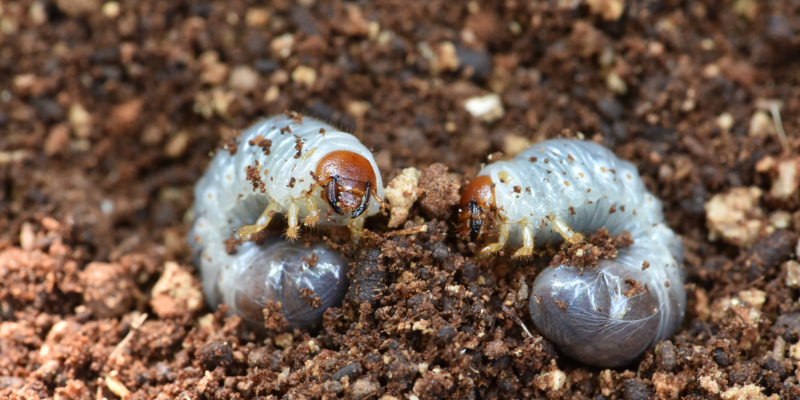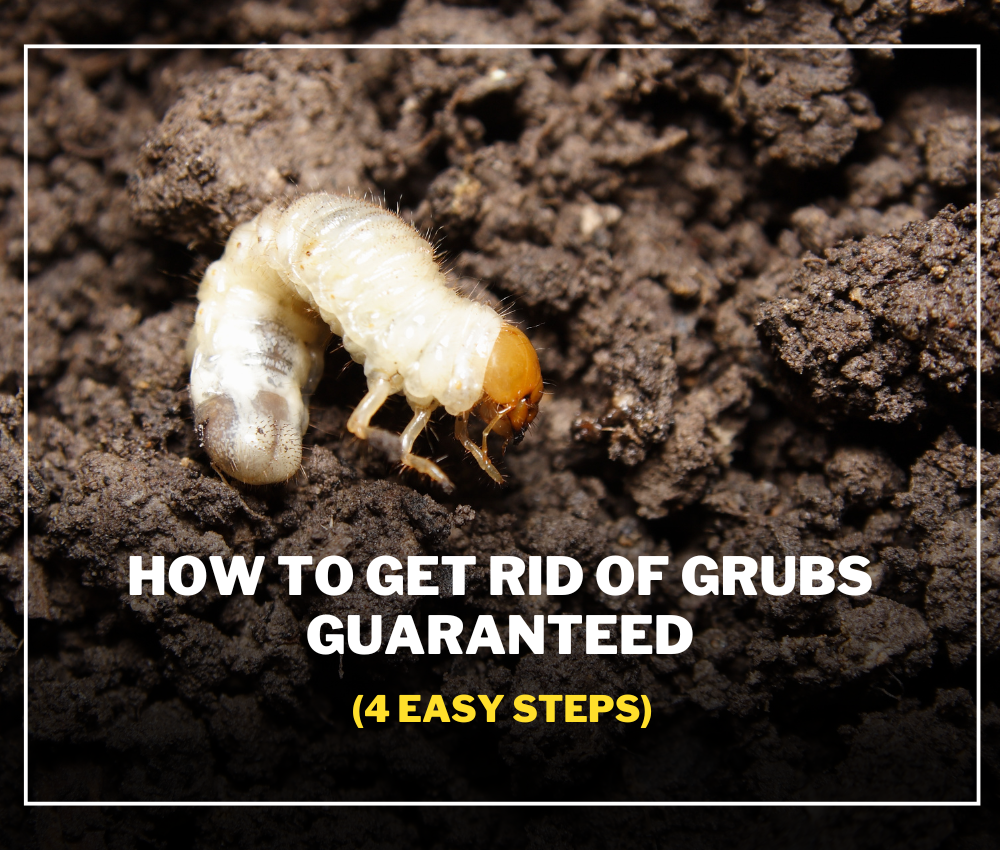How to Get Rid of Grubs Guaranteed (4 Easy Steps)
Learn how to eliminate grub worms and restore your lawn's health with our 4-step guide. Identify, inspect, control, and prevent grubs for a lush, green lawn all year round!
Introduction:
If you've been noticing patches of dead grass in your lawn, especially during the summer months, there's a good chance that grub worms are the culprit. These slimy creatures can wreak havoc on your turf, affecting its ability to absorb water and nutrients, ultimately leading to brown patches and weakened grass. In this comprehensive guide, we'll walk you through a 4-step process to identify, inspect, control, and prevent grub worms from damaging your lawn.

Step 1: Identification
The first step in tackling a grub worm problem is to ensure that these pests are indeed the cause of your lawn troubles. Grub worms are the larvae of various beetles, and they live underground, feeding on grass roots. To identify them, look for irregular patches of dead turf and dig a square foot section about three inches deep. Grubs are typically white with brownish heads, large mandibles, and three pairs of legs near their head.
Step 2: Inspection
Once you've identified grub worms as the issue, it's essential to inspect your lawn thoroughly for signs of their activity. Check for areas with scattered dead patches of grass, as these are often indicative of grub infestations. Use a shovel to dig and examine the soil for the presence of grubs. If you find more than five grubs in a square-foot section, it's time to move on to the next step.
Step 3: Control
Late summer, particularly August and September, is the peak time for grub activity. This is the ideal time to apply a pesticide to control their population. You can choose between a granular pesticide like imidacloprid 0.5 G or a liquid pesticide like Dominion 2 L. Dominion 2 L is a systemic insecticide that penetrates deep into the soil, targeting grubs as they feed on grass roots. It also offers residual protection, lasting up to three months.
Step 4: Prevention
Preventing future grub infestations is key to maintaining a healthy lawn. Regular maintenance practices such as mowing at the right height, proper watering, and fall fertilization can help strengthen your turf and make it less susceptible to grub damage. Additionally, applying Dominion 2 L or imidacloprid granules every three months can provide long-lasting control and prevent grubs and beetles from returning.
Also Read : Citrus Leaf Curl and Leaf Miner Control in Your Garden
Conclusion:
Grub worms can be a major nuisance for homeowners, causing unsightly patches of dead grass and weakening the overall health of your lawn. By following these four steps – identification, inspection, control, and prevention – you can effectively get rid of grub worms and ensure a lush, green lawn year-round. Don't let these pests ruin your outdoor space; take action today and reclaim your turf from grub damage!
